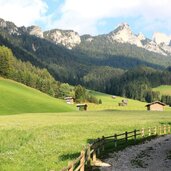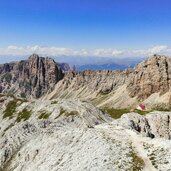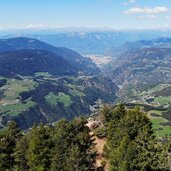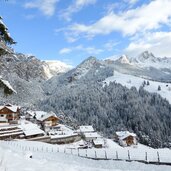Tranquillity and an impressive nature park define this small summer resort at the entrance to Val Ciamin valley
Image gallery: Bagni di Lavina Bianca
Bagni di Lavina Bianca (Weisslahnbad), another hamlet of Tires al Catinaccio, lies around 200 metres higher than the main village. In the 19th century, the name Weisslahn - "weiss" means white - referred to a quarry from which white gravel is still extracted today. Right next to it was a healing spring, which locals used for rheumatism, anaemia and metabolic disorders.
This is how the word "Bad" (spa) was added to the place name Weisslahn. Over time, the hamlet attracted more and more visitors, who came here for health treatments against the backdrop of the Catinaccio Group and enjoyed the landscape. An interesting structure stands on the banks of the Rio Ciamin stream: the Steger Sawmill, a significant example of a water-powered Venetian sawmill. As early as the 13th century, Venice spread this type of construction northwards.
The Steger Sawmill has been renovated and restored in recent years. For a time, it also housed the visitor centre of the Sciliar-Catinaccio Nature Park. After the centre moved to a new building in the main village of Tires, the sawmill became an information point. From the Bagni di Lavina Bianca hiking car park, you can set off on a classic hike to the Monte Cavone Hut and up to the peak of the Monte Balzo. The first section of the trail leads to the Wuhnleger, a small pond.
The Wuhnleger is a popular photo spot, its water reflecting the peaks of the Catinaccio Group and the Vajolet Towers. The Val Ciamin, at whose entrance Bagni di Lavina Bianca is located, extends into the southern part of the Sciliar-Catinaccio Nature Park. The natural gorge winds its way between rock faces and is ideal for snowshoeing tours in winter.



























